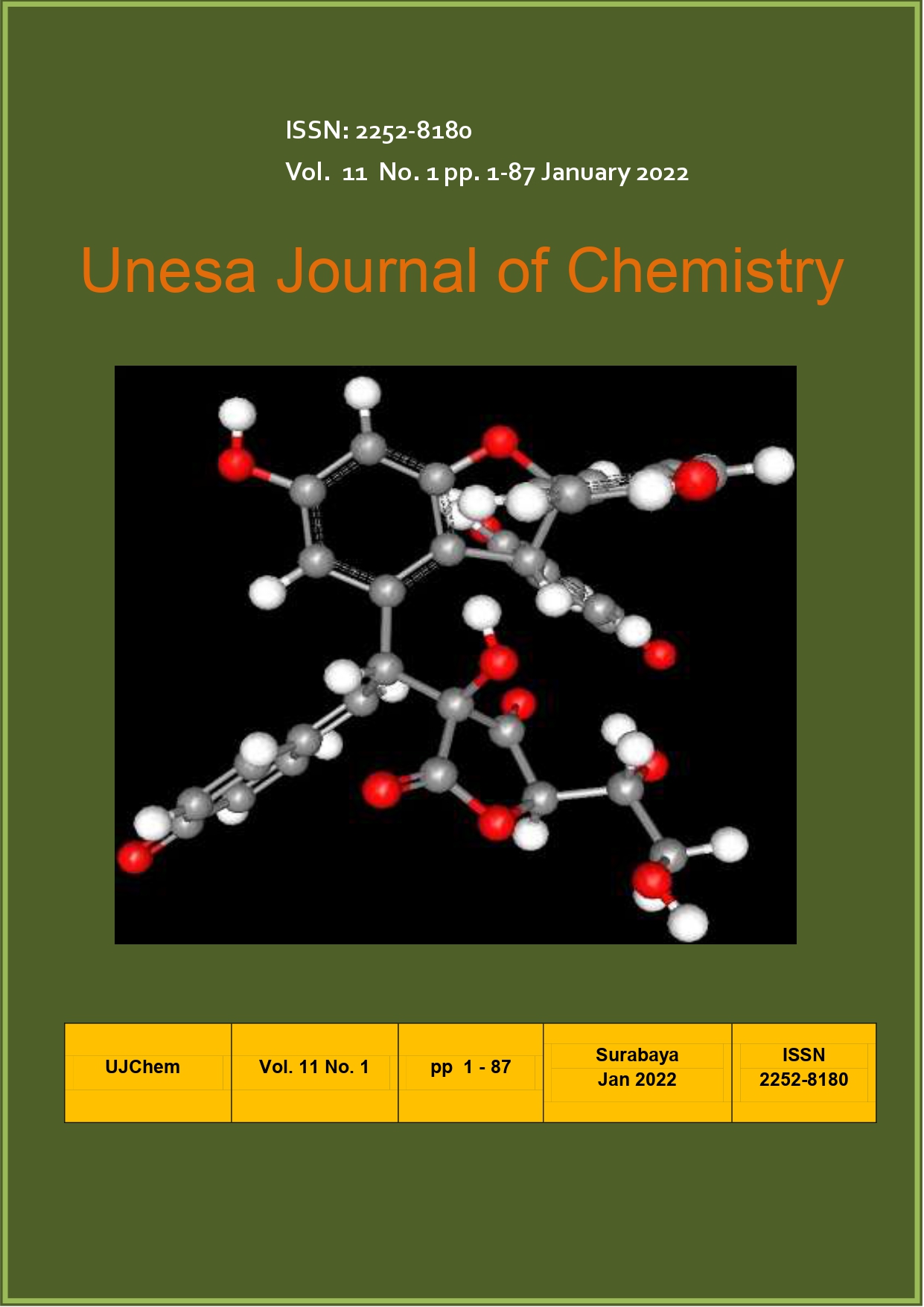PENGARUH JUMLAH POROGEN PADA SINTESIS MIP (MOLECULARLY IMPRINTED POLYMER) TERHADAP ADSORPSI MIP-KLORAMFENIKOL
Isi Artikel Utama
Abstrak
Tujuan dari penelitian ini adalah untuk mengetahui pengaruh dari jumlah volume porogen asetonitril saat sintesis Molecularly Imprinted Polymer (MIP) terhadap kemampuan adsorpsi kloramfenikol dan mengetahui karakteristik gugus fungsional yang terkandung dalam Non Imprinted Polymer (NIP) dan MIP. Variasi porogen yang digunakan adalah 30 mL, 45 mL, dan 60 mL. Pengaruh jumlah volume porogen terhadap kemampuan adsorpsi akan diukur dengan menggunakan instrumen High Performance Liquid Chromatography (HPLC), sedangkan untuk mengetahui gugus fungsional dalam NIP dan MIP akan dikarakterisasi menggunakan Fourier Transform Infra Red (FTIR). Sintesis MIP menggunakan metode presipitasi. Hasil penelitian menunjukkan bahwa variasi porogen 60 mL memberikan nilai kemampuan adsorpsi paling tinggi dibandingkan dengan variasi yang lain yaitu sebesar 7,32 mg/g. Karakterisasi dengan FTIR menunjukkan adanya gugus NO2 pada NIP yang ditunjukkan pada bilangan gelombang 1517,56 cm-1 dan 1549,08 cm-1 sedangkan pada MIP gugus NO2 terdeteksi pada bilangan gelombang 1553,07 cm-1 dengan intensitas yang lebih rendah.
Kata kunci : MIP, kloramfenikol, asetonitril, kemampuan adsorpsi.

